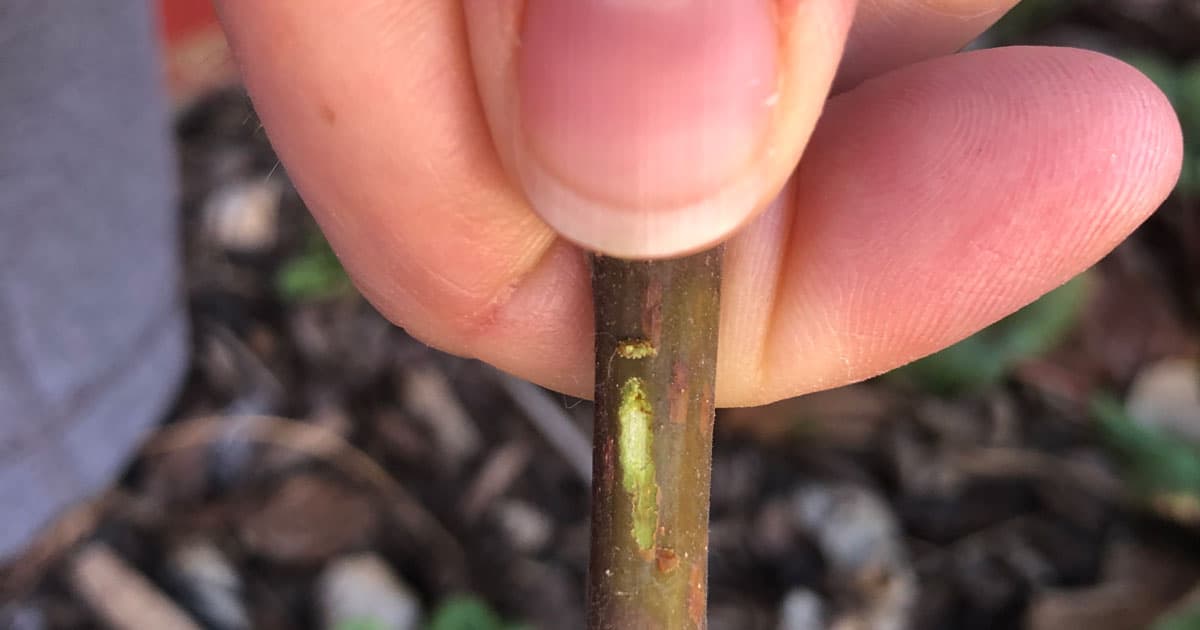
By Kim Toscano
Gardeners across the country experienced extreme cold temperatures this past winter leaving many shrubs visibly damaged. The impact of the cold snap is most evident on broadleaf evergreens like nandina, mahonia, holly, and loropetalum. Damage to deciduous plants is less apparent, though crapemyrtles, figs, and other shrubs may have sustained damage. Plant survival and the extent of damage will vary for one location to the next, but in all cases, the best thing to do right now is wait.
Wait Until Spring to Prune Damaged Plants
While you may be eager to remove cold-damaged foliage from your garden, the best course of action is to wait until spring to do any pruning. We will not know the extent of damage until new growth emerges. By pruning too early, we risk cutting out plant tissues are still living and will recover. Once we see buds begin to open or new foliage emerge, we can then differentiate between living and dead tissue. Be patient. Some plants, like crapemyrtles, take longer to leaf-out than others.
How to Handle Broadleaf Evergreens Hit By Winter Storms
The foliage of many evergreens has turned brown. In some cases, plants will recover completely, while other plants may have died back partially or completely to the ground. Expect to see a range of damage, depending on the hardiness of each plant type and the microclimate. Plants of the same species can respond differently depending on their location in the landscape. For example, I have distylium in a protected location that experienced little damage while the more exposed plants have completely browned.
Many evergreen and semi-evergreen shrubs will simply drop damaged foliage and leaf out in spring with fresh growth. Other plants may die back partially, with new foliage and stems emerging from the lower portion of the plant. As new growth emerges, cut stems back to living tissue making proper pruning cuts. It may take a couple years of shaping to regain a strong form.
How to Prune Winter Damaged Needled Evergreens
Unfortunately, managing needled evergreens is a bit more challenging. In cases where the entire plant has browned, the shrub is unlikely to recover. In less severe cases, individual branches may have died back. Cut back dead branches to a healthy lateral branch or remove completely. Over time, new growth should hide any gaps in the plant form. In general, needled evergreens do not resprout from old wood, so you can’t use rejuvenation pruning. Yews are the exception to this rule.
How to Prune Shrubs that Regrow from the Roots
Severely damaged plants may die back completely to the ground and regrow from the roots. Not all plants have the ability to do this, but many deciduous and evergreen shrubs including mahonia, nandina, crapemyrtles, hydrangeas, weigela, and butterfly bush or buddleia can regrow from the roots when the tops die back. Some hollies and viburnum also regrow from the roots. It is always best to research specific plant species before taking any action. And remember that cold-damaged crapemyrtles can leaf out very late, so practice patience.
Wait until new growth emerges in the spring before pruning. If these plants do not leaf-out, you can cut the stems back six to twelve inches above the soil. This is an extreme form of pruning called rejuvenation pruning. Plants respond to this type of pruning by producing many new shoots. You will likely need to thin this new growth, selecting the strongest stems to form the new canopy.
If you are uncertain is a branch is dead or alive, scratch the bark with your thumb nail and see if the plant tissue underneath is still moist and green or dry and brown. If it is still green, there is a chance the stem will still send out new shoots this spring. However, only time will tell.











